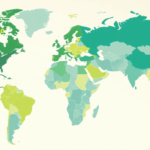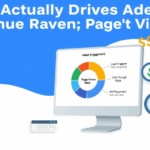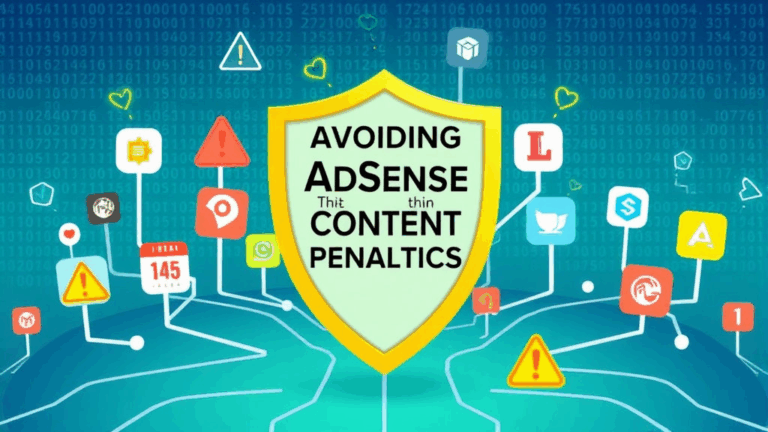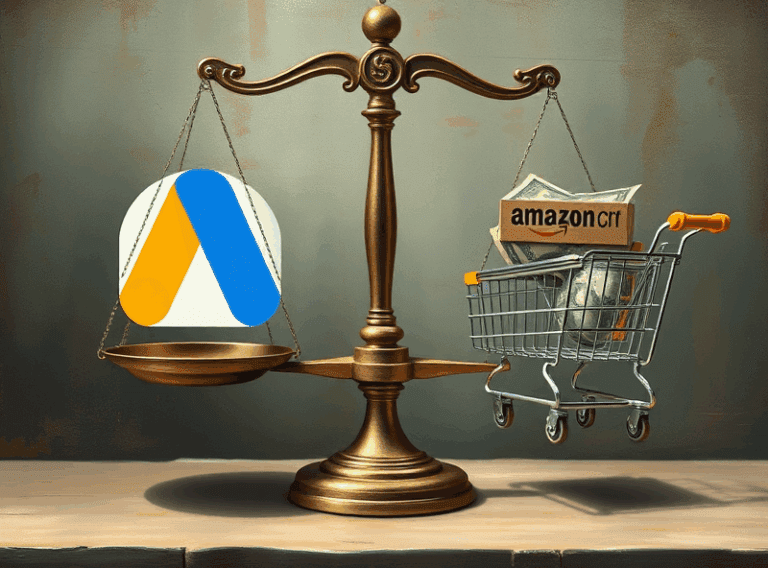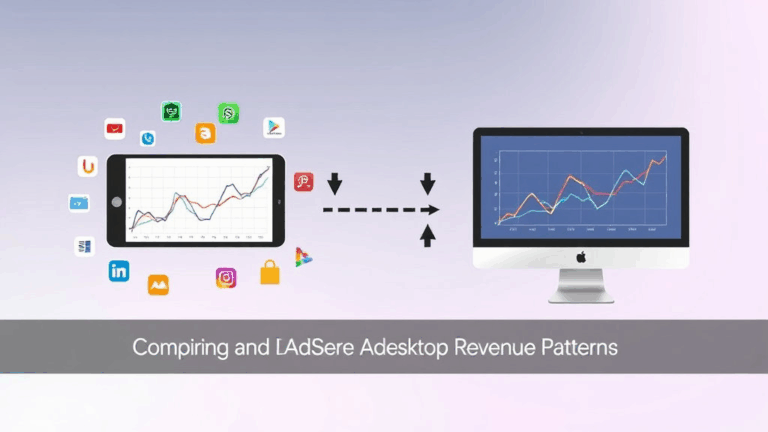Which AdSense Niches Still Actually Pay Well in 2025
Why Actual RPM Beats Theoretical CPC Every Time
Everyone thinks picking a high-paying AdSense niche is about finding the biggest CPC unicorn. Like, “oh finance gets $30 clicks, let’s write about mortgages now.” That’s a cute approach — until you realize those clicks never show up for you unless you’re literally an Experian microsite or rank #1 for “best Roth IRA comparison”.
What actually matters is RPM — revenue per 1000 impressions — especially over time. That means knowing which categories don’t just have high click value, but actual engagement, advertiser spending continuity, and (this is the part I always forget) human beings who aren’t using Brave with uBlock Origin installed.
I had a site I barely updated — it was in the home DIY niche. I wrote two decent posts about pressure-treated wood and vinyl tile adhesives. The RPM on that site crept up over months to nearly double what my tech gear blog was pulling, even though the CPCs were allegedly higher for some of those gadget-related terms. Turns out folks shopping for home improvement stuff actually click, browse, and generally act like normal web users.
Long story short: if CPC is the bait, RPM is the fish. And too many folks are staring at bait without checking their bucket.
The Underrated Monsters: Parenting, Home, and Educational Niches
Back around 2020, I expected “parenting blogs” to die a slow Pinterest-shaped death. But nope, they’re still weirdly functional. Especially ones that lean educational — stuff like “how to prepare your toddler for kindergarten interviews” or “STEM toys that don’t suck.”
My wife’s old blog about early literacy — zero backlinks, impossible domain — started trending toward a solid $13 RPM with just ten posts. No magic. Just deeply concerned moms clicking on anything that promises precocious reading skills. The CPM ads in those verticals (especially if you can attract educational services and subscription boxes) are surprisingly generous.
And don’t sleep on home categories either — not real estate investing, that junk’s hypercompetitive. I mean décor, storage hacks, lighting decisions. All the under-monetized Martha Stewart territory. Half the CPMs are furniture retail wars in disguise. Major advertisers like Wayfair, Target, and those smaller DTC brands throw steady ad inventory into home inspiration blogs that don’t even post regularly.
Health Content Is High Risk, But Mid-High Reward
There’s a reason insurance sites flirt with double-digit CPCs — health is a scary, expensive niche. But that also means Google gets twitchy about E-E-A-T. Any site writing about even mild health advice needs expert bylines and insane content hygiene or else it gets sandboxed faster than you can spell “algorithm volatility.”
I once tried spinning up a blog about natural sinus remedies after a legitimately miserable flu. Used chat logs with a pharmacist friend as the base for factual consistency. The content was solid — but the site floundered at like $4 RPM with weirdly irrelevant fitness ads. I filed two crawl feedback tickets in Search Console before realizing I hadn’t marked the byline as medically reviewed — and I buried the author schema.
Three weeks later, I fixed the metadata, ran a few schema validators, and suddenly the CPM ads shifted. Think: allergy clinic remarketing, asthma medication banners, even Blue Cross running display placements. Jumped to $11+ RPM and stabilized. But there’s no casual way to play in health — if you slap together one sketchy turmeric post, Google will kneecap your rankings before your DNS fully propagates.
Tech Isn’t Dead, But It’s the Noisiest Playground
I keep hearing that tech blogs don’t make money anymore. That’s only half true. Yes, affiliate competition flattens AdSense earnings, but for genuinely niche plays — mechanical keyboards, network monitoring gear, self-hosted Raspberry Pi projects — there’s oxygen.
The trap: writing about generic gadgets. If you’re reviewing budget Bluetooth earbuds, congrats, CPMs are crap, and you’re lost in a sea of cookie-cutter product round-ups. But when I wrote a 2400-word piece on using Tailscale for self-hosting dashboards behind CGNAT — suddenly I saw display ads for IT automation SaaS platforms and mid-tier enterprise tools. Mostly US-targeted, surprisingly steady.
Here’s the catch nobody tells you: unless your audience is tech buyers (not tech fans), your RPM will dip. That’s the behavioral flaw in Google’s ad logic — it serves ads matched to autofill-style user interests, not contextual buyer content half the time. Which means a “productivity tools” blog can drown in AdSense placements for time tracking apps with $0.12 CPCs, even if it’s high quality.
Niche Finance Is Better Than Broad Finance (But Still Weirdly Cutthroat)
Everyone loves to drool over finance niches — personal loans, credit cards, crypto. But general-purpose finance is overrun. Like, you can’t swing a dead cat without hitting 14 fintech guys all buying keywords around “refinance rates.”
The trick (and it’s fragile) is going hyper-specific: stuff like “student loan management for new immigrants” or “freelancer quarterly tax calculators.” If you pick a subsegment with real pain but low editorial volume, the advertisers still come — and there’s this sweet intersection of high buyer intent and low AdSense inventory density.
That said, there’s still dark-side behavior everywhere. I got an RPM spike last summer for a freelance budgeting post targeting people invoicing in Bitcoin. The surge didn’t last. Turned out some AdSense placements came from one fly-by-night fintech who later got delisted from YouTube’s ad partners lot because of deceptive terms. Classic whack-a-mole.
“I traced a weird on-site .js call and found out one ad net was calling 5th-layer iframe ads from a crypto lender no longer in business — and Google still paid for the impressions.”
Gaming and Entertainment: High Traffic, Meh Revenue
Gaming blogs — walkthroughs, updates, news — can pull truly stupid levels of traffic when timed correctly. I’ve seen posts about PUBG patch notes go semi-viral and collect 200k views in four days. But you know what the RPMs were? Somewhere between tragic and insulting.
The issue is advertiser quality. You get Steam sales, mobile games, adtech filler banners, and whatever leftover impressions didn’t get claimed in real time. Even premium ads in gaming audiences are often video trailers that don’t pay the same way standard product ads do. And because the demo skews younger, logged-in, and ad blocker happy, even your viewability suffers.
TL;DR: if you’re chasing impressions, sure, game on. But if you’re expecting to actually earn meaningful revenue from AdSense alone — forget it. Monetize with merch, affiliates, or sponsorships. Just don’t expect 4-cent CPCs to scale.
Legal, Law, and Governmental Content: Sleeper Monetization Beast
No joke — a two-page site I helped rebuild for an expungement eligibility calculator ended up clearing more in one month than a dozen product review blogs did in a quarter. Why? Legal consulting referral ads.
The catch is, you need just enough technical accuracy to not misinform people, but also approachable language so it doesn’t scream PDF-formatted nightmare. And more importantly — local targeting. Google’s ad system LOVES legal content with geo-relevance. Terms like “DUI defense Charleston” or “tenant rights in Madison” serve actual law firm landing page campaigns.
If your site can hold a 2-minute dwell time and get users to click on practical stuff (forms, contact tools, quizzes), AdSense loves you for it. That dwell time sends strong engagement signals, which feeds Google’s confidence in serving better CPM inventory. Just don’t overdo it with directory-style SEO garbage — I once tested a keyword-stuffed city-category layout for divorce mediation and got cut out of AdSense for two weeks. The appeal passed, but the sting lingers.
SaaS Review Sites Are a Mess, But Sometimes it Works
Total crapshoot. I’ve seen SaaS review blogs with suspiciously clean layouts pull RPMs in the $20+ range. But also seen others languish at $3 despite tons of content. What breaks it? Google’s poor edge-case understanding of SaaS comparison content.
Say you write a head-to-head post: “Notion vs ClickUp vs Workflowy.” Expect chaos. I had one article like that start getting mostly ad units pitching productivity courses and AI junk tools — zero direct vendor display campaigns. Somehow AdSense saw the keywords, assumed it was beginner-help blog material, and filled it with low-value noise.
A brief fix that helped for a while:
meta name="robots" content="noarchive"
Adding that reduced bot mistagging and seemed to clean up what ad inventory I was getting served. No clue why — probably messed with how Google cached the rendered page. Another theory is it just gutted older JavaScript-hybrid ad logic from misfiring.
If you’re going to write SaaS content, structure matters: long-form breakdowns that clearly separate features, endorsements, pricing pages — that format pulls better contextually-mapped ad units. And yes, the old trick of embedding affiliate-style CTAs still works, but AdSense won’t be your golden goose there.
Travel Is in Recovery, Just Don’t Write About Boring Hotels
Post-pandemic, travel blogs are crawling back, but the monetization floor hasn’t snapped back to pre-2020 levels yet. Folks still click trip planning content, sure, but hotel CPMs haven’t fully rebounded. You need layered monetization or killer referral pipelines.
The one edge: adventure content, local itineraries with niche vendors, or “off the beaten path” trip styles. I ran an obscure post about how to book trains in Sri Lanka with Visa gift cards — not even kidding — and the payment-related ads that showed up were hilariously specific. Pulled $16 RPM over two weeks, then fell off the cliff.
That’s the volatility here. You can hit gold on weird transactional posts, but consistency is absent. And dear god, avoid the 1001 “best hotel in [city]” playbooks — those got fed into AI content grinders at scale and now rank behind Reddit threads.
A Practical List of Niches That Still Kick Profit
- Vocational training guides — especially trade-school aligned certifications
- Special needs parenting (actual lived experience matters here)
- Very specific home organization hacks (small space, single-parent focused)
- Prenuptial & family law in low-coverage regions
- Legacy investment instruments (annuities, bonds for retirees)
- Educational printables with tangential blog content (think: worksheets linked to articles)
- Legit eco-product comparisons where the buyer intent is measured purchases



